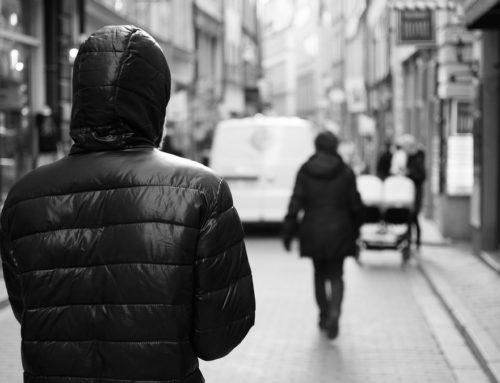It’s that time of year again. It feels like in a blink of an eye, the carefree fun of summer is slowly winding down. The last hurrah of summer pool parties, barbecues, camping, road trips, beach days and other warm weather amusements are coming to a close. Summertime gives everyone a nice break from the shuffling of papers and hauling around text books, the carpools and heavy backpacks of the school year. Truth is, when fall rolls around again, parents and kids have a lot to juggle. Now is the time when parents and children are starting to think about gearing up for a fresh school year. New school supplies and back to school clothes. Talk of who got assigned which teacher and what fall sport are they trying out for begin to overshadow the summer plans. It’s a combination of feelings for many-excitement and anticipation for the new school year mixed with a nostalgic longing to stretch the summer season as long as possible. It’s a perfect time to review some important tips on back to school safety and how to protect children from common injuries that happen this time of year.
School days bring more congestion and people on the roads, from school buses picking up children along their routes, kids on bikes hurrying to get to school before the bell rings and frazzled parents trying to drop their kids off before work. It can be a hectic scene and it’s extremely important for drivers to slow down and pay attention when kids are present – especially before and after school. As your children head out the door on that first day of school – and every day – there is one priority: Nothing is more important than making sure they get home safely.
According to a study by SafeKids.org, 61 children are hit by cars every day in the United States, most often during the hours before and after school, and peaking in September. And, there has been a noticeable demographic shift. It is now much more likely a teenager will be hit by a car than younger children.
Of the 484 pedestrians ages 19 and younger who died after being hit by a motor vehicle in 2013, 47 percent were age 15 to 19, according to Injury Facts 2015. We also know that 16,000 pedestrians 19 and younger were injured in 2013. That’s 44 per day.
If you have or know a child that has been a victim of an injury, please contact the skilled personal injury attorneys and staff at Schulze Law. We are equipped to handle the individuality of each and every personal injury case we represent and offer compassionate, clear counseling and assistance. We are there for victims and their families when they need support the most. Accidents and injuries suffered during the school year (and any time of year) can be serious and complex. Our team can help you and your children.
Research shows school-age children are actually nine times more likely to sustain an unintentional injury—whether on the playground or in school—than to be the victim of violence while at school. In fact, an estimated 2.2 million children ages 14 and under are injured in school-related accidents each year, according to the National SAFE KIDS Campaign. Number one is to avoid common school sports injuries.
By teaching children basic back to school rules and tips regarding their safety, they can start this exciting time with the knowledge and skills they need to stay safe while enjoying this special time and throughout the entire school year.
Let’s review the Top Tips of Back to School Safety:
- School Bus Safety
- Stand back from the curb as the bus arrives, and never run to or from the bus.
- Don’t push, shove, or yell loudly while on the bus.
- Stay in your seat during the entire ride.
- Always obey the bus driver.
- Wait for the driver’s signal before crossing the street, and always cross at least 10 feet in front of the bus.
- Don’t ever get off at a different stop.
- Bike Safety
- Always wear an approved helmet when riding a bicycle.
- Wearing clothing that is bright and colorful makes it easier for drivers to see you.
- Learn proper hand signals
- Ride a bike on the right hand side of the road traveling in the same direction as the traffic.
- Always stop for stop signs and follow the rules of traffic lights.
- Learn and follow the rules of the road.
- Do not listen to music or use cell phones. No texting and biking!
- Walking Safety
- Review and walk the route several times before the first day of school.
- When school starts, walk to school with other children in your neighborhood, and preferably an adult.
- Always walk on sidewalks, and if sidewalks aren’t available, walk on the side of the street facing traffic.
- Street corners and intersections are the safest places to cross the street. Remember an intersection with a crossing guard is the best place to cross.
- Never cross the street in front of a parked car. Other cars on the road might not see them if they dart into the street.
- Backpack Safety
Backpacks have become a staple of back to school accessories. Unfortunately, these convenient and useful bags are potentially harmful if not used correctly causing possible shoulder or neck injuries, back pain and muscle and joint strains.
- When a backpack is fully loaded, it should not weigh more than 15 to 20 percent of the child’s body weight.
- Never carry a backpack over one shoulder using only one strap. Always wear a backpack using both shoulder straps.
- If a backpack has a waist strap, use it.
- Choose a backpack with wide straps. The best choice is a backpack with a padded back and padded straps
- Use all of the compartments in the backpack to distribute the weight of the contents more evenly.
- Playground Safety
According to the Consumer Product Safety Commission (CPSC), more than 200,000 children are sent to the emergency room every year with playground-related injuries, and most occur when a child falls from a piece of playground equipment onto a hard surface.
- Ask your child’s school how they monitor the playground during recess. Make sure your child knows to go to the monitor on duty if he or someone else is injured.
- Checking that playgrounds have soft material under them such as wood chips, sand, or mulch.
- Reading playground signs and using playground equipment that is right for your child’s age.
- Making sure there are guardrails in good condition to help prevent falls.
- Looking out for things in the play area that can trip your child, like tree stumps or rocks.
- Food and Allergy Safety
- Be aware that with the rise of nut allergies, many schools have opted to go nut-free.
- Review your child’s school rules regarding food and nut allergies before school starts, and know what foods are banned from the classroom.
- If your child has a food or nut allergy, talk to their teacher before the first day of school so she knows what to do in case of an allergic reaction.
- Make sure the school has any medications your child might need.
- Bullying Safety
Bullying can be a serious danger to a child’s physical and emotional well-being and should be treated as such.
- Talk to your child’s school about what is bulling and how it can be prevented.
- Have a conversation with your child about bullying and how to treat others who might be different from them.
- Be aware of any warning signs that your child might be a victim.
- School Sport Safety
According to the CDC, seven million teenagers will participate in school sponsored athletics and these athletes will suffer two million sport related injuries annually.
- In case of an emergency, provide your athlete’s coaches with important information (phone numbers, doctor information and allergy information).
- Meet with the coaches before the first practice to inform them of history with asthma or other medical conditions that require special attention.
- Warm up and stretch before games and practices
- Coaches should set aside time before every practice and game for athletes to warm up properly.
- Stretching before practice and games can release muscle tension and help prevent sports-related injuries.
- Remember to hydrate.
- Wear appropriate sports gear. This may include helmets, shin guards, mouth guards, ankle braces, shoes with rubber cleats and sunscreen.
- Know the signs and symptoms of concussions.
- Make rest a priority.
- Be a supportive parent.
By staying alert and aware of common injuries and accidents, you and the children in your life can avoid spending back to school moments in the hospital or doctors office. Safety comes first. Please practice care and caution. Parents need to stay vigilant and prepared because they often have the tools to keep their children safe.
All that said…back to school time can be fun and exciting! New school supplies, back to school clothes, friends reuniting, sports kicking into gear and the smell of fall on the horizon. Children grow up fast and it truly is a special time for kids and parents alike. There are so many ways to appreciate and enjoy the school season in full swing, but it can also become a very dangerous time of year when things are not done safely and correctly or the proper precautions are in place. If your child has been injured in an accident, discuss your situation with the experienced team at Schulze Law. We understand the intricacies of personal injury law, and we have the experience, expertise and resources to help our clients.
Good luck! Don’t forget to have fun, learn and enjoy this special time with your kids and loved ones!
CALL NOW: 857-300-5300 Emergency After Hours Number: 800-894-9267 XLAW1 (5291)
Resources:
http://www.nsc.org/
https://www.familyeducation.com/
https://www.cdc.gov/






